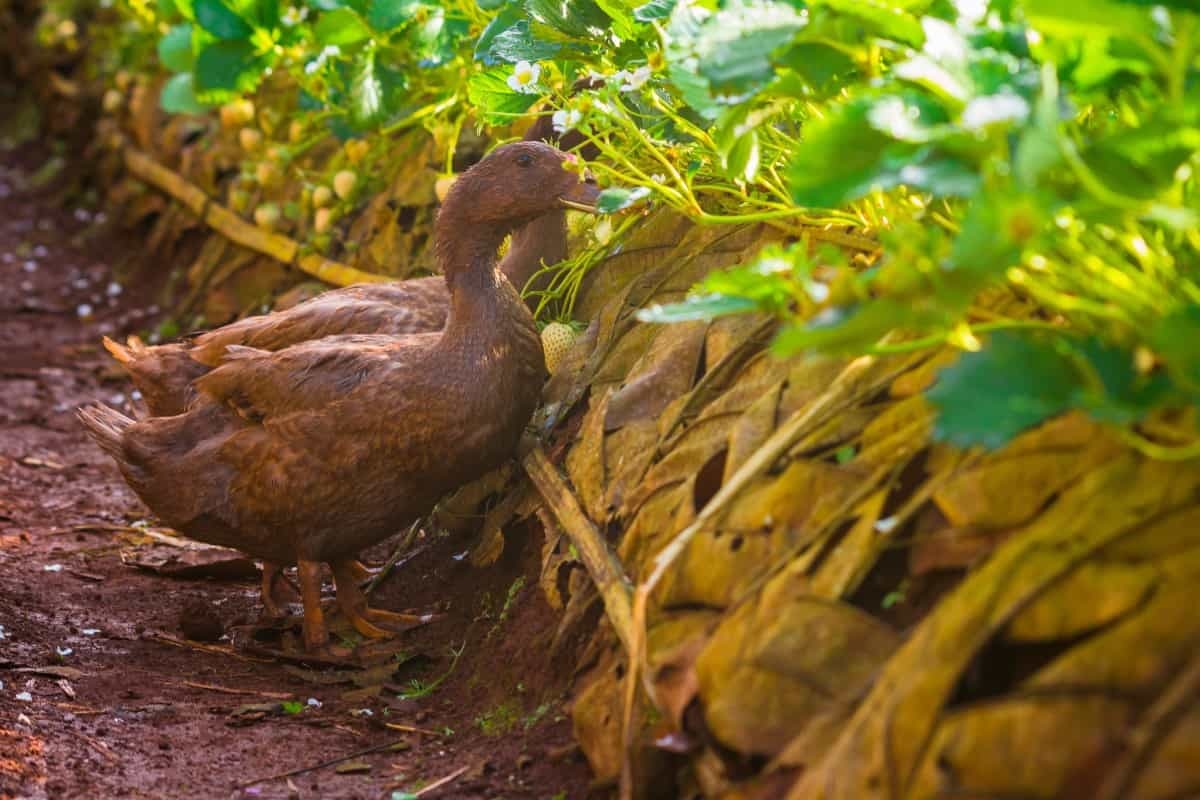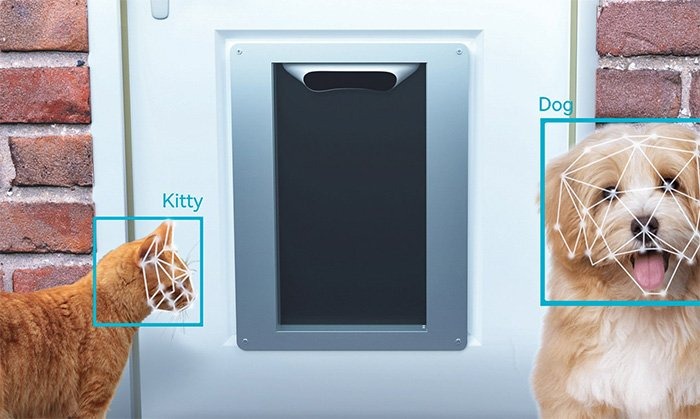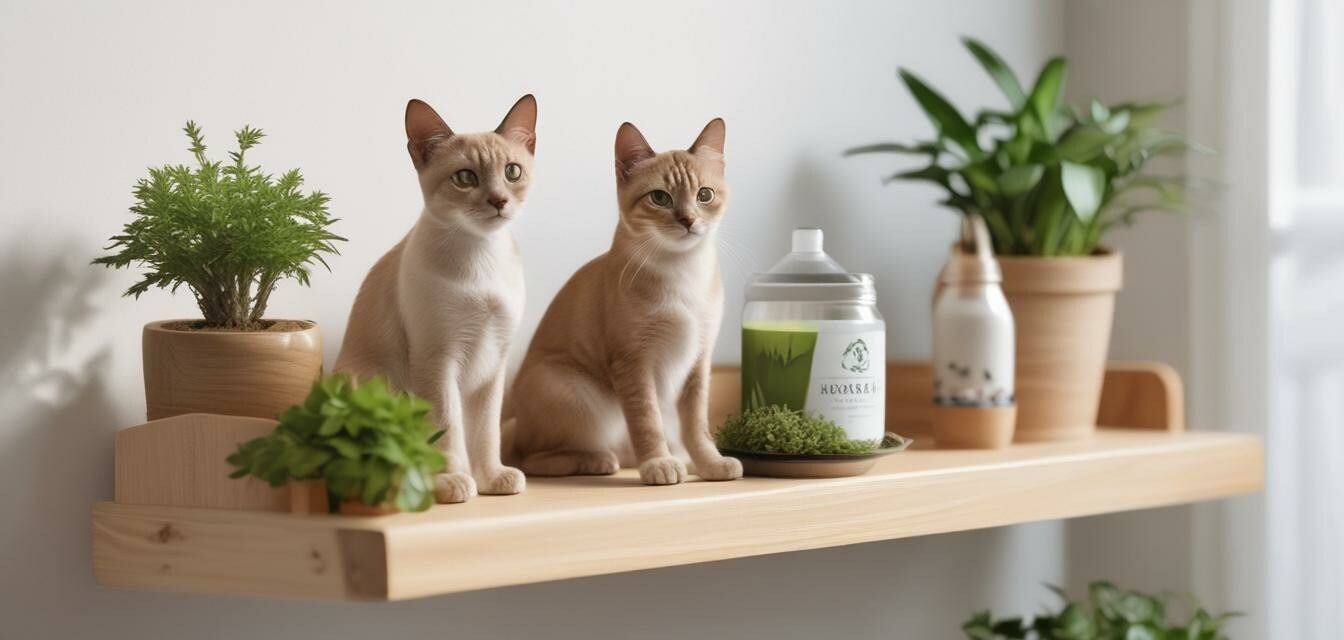
Critters that clean: using certain animal species (like chickens, ducks) for pest control in home gardens
“Discover how chickens, ducks, guinea fowl, and other garden-friendly animals can naturally control pests, reduce chemical use, and promote a healthier ecosystem. By integrating these critters into your home garden, you not only protect your plants from insects, slugs, and rodents but also enhance soil fertility, biodiversity, and sustainability while enjoying additional benefits like eggs and natural companionship.”
🐶 Pet Star
46 min read · 3, Oct 2025

Introduction
For centuries, humans have coexisted with animals in mutually beneficial ways. One of the most practical and sustainable relationships lies in the natural pest control offered by certain domesticated creatures. Chickens, ducks, guinea fowls, and even some amphibians and reptiles can serve as "living pesticides," reducing or even eliminating the need for harmful chemicals. In today’s era, where sustainable gardening and organic farming are gaining momentum, the concept of using critters to clean gardens of pests is both an ancient practice and a modern solution.
Instead of relying solely on chemical insecticides, gardeners are rediscovering the ecological benefits of allowing animals to play their natural roles. The result is a healthier ecosystem, reduced chemical exposure, and in many cases, additional benefits like fresh eggs, manure for compost, and even companionship. This article explores how chickens, ducks, and other species help in pest control, their advantages, limitations, and best practices for integrating them into home gardens.
The Idea of Biological Pest Control
Biological pest control is not new. It refers to using living organisms to control pests. In agriculture, this might involve introducing ladybugs to manage aphids. In home gardens, the concept can be extended to using small animals. These creatures not only reduce pests but also bring biodiversity, which strengthens the resilience of the garden ecosystem. Unlike chemical pesticides, which may kill indiscriminately, critters often target specific pests, reducing collateral damage to beneficial insects and soil health.
Chickens: The Feathered Garden Helpers
1. Pest Control Abilities
Chickens are omnivorous foragers with an incredible appetite for bugs, beetles, grubs, caterpillars, and even small rodents. Some of the pests chickens are known to devour include:
- Japanese beetles
- Grasshoppers
- Slugs and snails
- Ticks and fleas
- Termite larvae
- Cutworms and armyworms
Their natural scratching behavior turns over soil, exposing insect larvae and pupae for consumption.
2. Additional Benefits
- Egg Production: Provides a sustainable source of protein.
- Soil Aeration: Scratching loosens compacted soil, improving aeration.
- Manure: Chicken manure is nutrient-rich and can be composted to improve soil fertility.
3. Limitations
However, chickens can be overzealous. They may:
- Scratch up seedlings.
- Peck at tender leaves, damaging crops.
- Require protection from predators like hawks, foxes, or stray dogs.
4. Best Practices
- Use chicken tractors (movable coops) to confine chickens to specific garden sections.
- Allow them into the garden after harvest to clean up pests without harming crops.
- Supplement their diet with feed to prevent them from overeating plants.
Ducks: The Slug Specialists
1. Pest Control Abilities
Ducks, particularly breeds like Indian Runners and Khaki Campbells, are exceptional at controlling slimy garden pests. Their top menu items include:
- Slugs
- Snails
- Caterpillars
- Beetles
- Flies and mosquito larvae
What makes ducks unique is that they forage without excessive scratching, unlike chickens.
2. Additional Benefits
- Eggs: Duck eggs are larger, richer, and often preferred in baking.
- Weed Seeds: Ducks eat certain weed seeds, reducing garden weeds.
- Gentle Foraging: They are less destructive to plants compared to chickens.
3. Limitations
- Ducks require water access (pond or kiddie pool) for their health.
- They produce wetter manure, which can be messy if not managed properly.
- Like chickens, they need protection from predators.
4. Best Practices
- Herd ducks into the garden during slug/snail season.
- Keep shallow water basins nearby to support their health while foraging.
- Rotate them between garden areas to prevent overgrazing.
Guinea Fowl: The Insect Terminators
Guinea fowl are less common but incredibly effective at pest control.
Pest Preferences
- Ticks (highly effective, reducing Lyme disease risk)
- Grasshoppers
- Beetles
- Wasps
Benefits
- Less likely to scratch up soil like chickens.
- Hardy, disease-resistant birds.
- Strong watchdog tendencies; they sound alarms at predators.
Limitations
- Noisy, which can bother neighbors.
- Can fly and wander beyond the garden.
Other Helpful Critters
Frogs and Toads
- Eat mosquitoes, flies, beetles, and caterpillars.
- Thrive in gardens with water features.
Lizards (like geckos)
- Feed on ants, flies, and beetles.
- Require a warm, sheltered environment with plenty of hiding places.
Bats
- Consume thousands of mosquitoes in a single night.
- Installing a bat house can encourage them to settle nearby.
Cats (Indirectly)
- While not insect eaters, cats control rodents that damage roots and crops.
Advantages of Animal-Assisted Pest Control
- Chemical-Free Gardens – No reliance on pesticides.
- Sustainability – Encourages natural cycles of predation.
- Multiple Benefits – Eggs, manure, weed control.
- Healthier Ecosystems – Beneficial insects like pollinators are preserved.
- Cost-Effective – Reduced need for store-bought pest solutions.
Challenges and Considerations
While critters offer many benefits, there are important factors to keep in mind:
- Crop Damage Risk – Chickens may eat seedlings or scratch out roots.
- Predators – Hawks, foxes, raccoons, and snakes pose threats.
- Zoning/Regulations – Some urban areas have restrictions on keeping poultry.
- Disease Risks – Birds can carry parasites; sanitation is crucial.
- Balance – Over-reliance on animals can lead to new problems, like soil compaction.
Best Practices for Garden Integration
- Rotational Grazing: Move critters between sections of the garden.
- Timing Matters: Let poultry forage in off-seasons or after harvest.
- Protect Seedlings: Use fencing or netting to safeguard tender plants.
- Water and Shelter: Always provide fresh water and secure housing.
- Compost Management: Collect and compost manure properly to avoid nitrogen overload.
Case Studies and Real-Life Examples
- Permaculture Farms: Many permaculture practitioners use chickens and ducks as part of a closed-loop system. Chickens handle insect pests while their manure fertilizes the soil.
- Slug Control in Vineyards: In European vineyards, ducks are released to patrol grapevines and eat slugs without harming the plants.
- Tick Reduction by Guinea Fowl: Small homesteads in the U.S. report up to 80% fewer ticks after introducing guinea fowl.
Future of Natural Pest Control
As more people shift toward organic gardening and sustainable lifestyles, using animals as pest control agents is likely to grow. With urban homesteading on the rise, innovations such as smaller chicken tractors, modular duck pens, and community coops make it feasible even in suburban areas. This trend not only reduces chemical use but also brings humans closer to the rhythms of nature.
Using animals for natural pest control in home gardens is an ancient practice that has regained popularity in the modern era of sustainable gardening, where minimizing chemical inputs and fostering ecological balance are becoming central goals, and among the most efficient and practical critters to employ are chickens, ducks, guinea fowl, and other small species that thrive in outdoor environments while contributing to pest suppression; chickens, for example, are omnivorous birds that constantly scratch, peck, and forage, consuming a wide range of garden nuisances including grasshoppers, beetles, termites, cutworms, caterpillars, slugs, snails, ticks, and even small rodents, and while their pest-clearing capabilities are extraordinary, they bring along additional benefits such as egg production, soil aeration through scratching, and nutrient-rich manure that can be composted to improve soil fertility, yet these very same behaviors sometimes make them destructive if left unchecked, since young seedlings may be dug out, roots exposed, or leafy greens pecked apart, meaning gardeners must use strategies like chicken tractors—movable enclosures that allow birds access to pests while restricting plant damage—or schedule their foraging after harvest seasons when they can clean the soil without harming crops, whereas ducks, on the other hand, are less aggressive scratchers and are particularly skilled slug and snail hunters, making them invaluable in gardens plagued by slimy pests that destroy lettuce, cabbages, and other leafy plants; breeds such as Indian Runners and Khaki Campbells excel in pest consumption and also provide larger and richer eggs that are prized by bakers, and unlike chickens, ducks tend to forage more gently around plants, yet they require access to clean water for bathing and health maintenance, producing wetter manure that must be carefully managed to avoid soggy soil conditions, while guinea fowl—less common but equally valuable—are renowned for their ability to devour ticks, grasshoppers, and beetles without scratching up soil, and they also serve as natural alarms, sounding loud calls when predators approach, though their noisy tendencies and tendency to wander away from the garden make them less suited for urban environments and more practical for farms or larger homesteads; beyond these poultry options, other critters like frogs, toads, lizards, and bats can be welcomed into a garden ecosystem for additional layers of pest management, with amphibians thriving around water features and consuming mosquitoes, flies, and caterpillars, lizards hiding in warm sheltered spots to hunt ants and beetles, and bats consuming thousands of mosquitoes in a single night when provided with a simple bat house for roosting, while even cats indirectly help by deterring rodents that chew roots or dig burrows under crops, creating a multi-species approach to pest management that supports biodiversity and ecological balance, and the advantages of animal-assisted pest control are numerous: reduced reliance on chemical pesticides ensures gardens remain safer for humans, pollinators, and soil organisms, biodiversity is strengthened because beneficial insects are preserved rather than indiscriminately killed, households gain additional resources like eggs, meat, or compostable manure, and the approach is often cost-effective compared to repeatedly buying chemical sprays, yet these benefits must be balanced against challenges such as crop damage, predator threats from hawks, foxes, or raccoons, regulatory restrictions in certain urban neighborhoods, and the need for regular care, shelter, and sanitation to prevent disease, making it clear that these critters are best used as part of an integrated pest management system rather than as a stand-alone solution; best practices for success include rotational grazing where animals are moved between different areas of the garden to prevent over-foraging, careful timing to release them during pest outbreaks or after harvest to protect tender plants, protective fencing or netting to safeguard seedlings, providing access to fresh water and shade for welfare, and composting manure before use to neutralize pathogens and excess nitrogen, with real-life examples of this approach found in permaculture farms where chickens complete closed-loop systems by eating pests, fertilizing the soil, and supplying food, European vineyards that employ ducks to patrol grapevines and devour slugs without harming grapes, and small U.S. farms that dramatically reduce tick populations by releasing guinea fowl, demonstrating how traditional knowledge and modern sustainability practices converge; ultimately, the future of natural pest control will likely include more widespread adoption of these animal allies, especially as urban homesteading and organic gardening continue to grow, supported by innovations like compact chicken tractors, modular duck pens, and community-supported coops, enabling even suburban gardeners to enjoy the dual benefits of pest suppression and animal companionship, and when we consider the full picture, critters that clean represent not just a nostalgic throwback to older farming methods but a forward-looking ecological solution: they are living agents of balance, reducing pests while enriching soil and reconnecting humans to the cycles of nature, and though challenges exist, careful management allows gardeners to build vibrant, resilient ecosystems where crops, people, and animals thrive together in harmony.
Using certain animals like chickens, ducks, and guinea fowl for natural pest control in home gardens is an innovative yet time-tested approach that combines sustainability, biodiversity, and practical gardening, offering an eco-friendly alternative to chemical pesticides while simultaneously creating a healthier, more balanced ecosystem, and among the most popular and effective of these critters are chickens, which are omnivorous foragers with a voracious appetite for insects, beetles, grubs, caterpillars, slugs, snails, and even small rodents, making them particularly efficient at reducing pest populations that otherwise threaten vegetables, fruits, and ornamental plants, and their scratching behavior not only uncovers hidden larvae for consumption but also aerates the soil, improving structure and nutrient absorption, while their manure, rich in nitrogen and other essential nutrients, can be composted to fertilize garden beds, enhancing plant growth, yet the very same scratching that makes chickens excellent pest hunters also poses a challenge, as they can uproot seedlings, damage delicate plants, and occasionally overconsume desirable crops, which means gardeners need to carefully manage their foraging, using methods such as movable chicken tractors, fencing, or scheduled access after harvest, to strike a balance between pest control and crop protection, while ducks offer complementary benefits, particularly excelling at controlling slugs and snails that damage leafy vegetables and other soft plants, with breeds like Indian Runners and Khaki Campbells foraging efficiently without excessively disturbing soil or plants, and in addition to pest control, ducks provide larger and richer eggs than chickens, help manage certain weed seeds, and are generally gentler on plants, though they require access to water sources like ponds, kiddie pools, or troughs to maintain health and hygiene, and their wetter droppings must be managed to avoid soggy soil or nutrient imbalances, and guinea fowl, though less commonly kept, contribute significantly to tick, grasshopper, and beetle control while acting as natural alert systems due to their loud calls when predators approach, although their noise and wandering tendencies can make them less suitable for dense urban environments, and beyond poultry, other critters such as frogs, toads, lizards, and bats serve as excellent allies in controlling insects and other garden pests, with amphibians thriving in moist environments and consuming mosquitoes, flies, and caterpillars, lizards preying on ants, beetles, and small insects, and bats consuming thousands of mosquitoes per night when provided with roosting spaces, while even domestic cats help indirectly by controlling rodents that damage plant roots or burrow in garden beds, creating a diverse multi-species system that fosters ecological balance and reduces reliance on chemical interventions, with numerous advantages including the preservation of beneficial insects, promotion of natural cycles, improved soil fertility, production of eggs or meat, and cost savings over repeated purchases of pesticides, yet challenges exist, including crop damage, predator risks from hawks, foxes, or raccoons, urban zoning restrictions, potential disease transmission, and the need for adequate shelter, water, and nutrition for the animals, which underscores the importance of thoughtful integration and management practices such as rotational grazing to prevent over-foraging, timing for pest outbreaks or post-harvest cleaning, protective fencing for seedlings, provision of fresh water and shade, and proper composting of manure to neutralize pathogens and prevent nutrient overload, while real-life examples demonstrate the efficacy of this approach, such as permaculture farms that integrate chickens to forage pests and fertilize soil simultaneously, European vineyards that release ducks to control slugs without harming grapes, and homesteads in the United States reporting significant reductions in tick populations after introducing guinea fowl, illustrating how ancient knowledge and modern sustainability practices converge, and as the popularity of organic gardening and urban homesteading grows, these practices are likely to become more widespread, supported by innovations like compact chicken tractors, modular duck pens, and community coops that allow even suburban gardeners to participate, ultimately highlighting that critters that clean are not merely nostalgic farm animals but vital participants in ecological gardening systems, providing living pest control, nutrient cycling, and biodiversity support, and when carefully managed, they enable gardens to thrive naturally while minimizing environmental impact, reconnecting humans to natural cycles, fostering resilience against pests, and creating productive, self-sustaining ecosystems where both plants and animals coexist harmoniously, making it clear that integrating chickens, ducks, guinea fowl, and other critters into a home garden is a practical, sustainable, and highly beneficial strategy for anyone seeking chemical-free pest management, improved soil health, additional food sources, and a closer connection to nature, which positions this method as a forward-thinking solution for modern gardeners while honoring traditional agricultural wisdom.
Conclusion
Critters like chickens, ducks, guinea fowls, and other small animals provide an eco-friendly and sustainable solution to pest management in home gardens. Chickens excel at insect control but require careful management to prevent crop damage. Ducks are excellent slug hunters and are gentler on plants. Guinea fowl shine in tick and grasshopper control, while frogs, lizards, and bats bring additional layers of pest suppression.
The advantages are clear: reduced chemical reliance, healthier gardens, biodiversity, and additional yields like eggs and manure. However, challenges like predator risks, noise, and crop damage must be managed with thoughtful practices. Integrating animals into a garden system is not a one-size-fits-all approach but, when done well, creates a thriving, balanced ecosystem.
Q&A Section
Q1: Can chickens completely replace pesticides in a home garden?
Ans: Chickens can significantly reduce pest populations, but they cannot always replace pesticides entirely. They are most effective as part of an integrated pest management system combined with crop rotation, companion planting, and proper garden care.
Q2: Which is better for gardens—chickens or ducks?
Ans: It depends on the type of pests. Chickens are great for beetles, grasshoppers, and grubs, while ducks are superior at controlling slugs and snails. Many gardeners keep both for balanced pest control.
Q3: Are guinea fowl suitable for urban gardens?
Ans: Guinea fowl are highly effective at insect control but can be noisy and may wander. They are better suited for rural or suburban areas with space rather than dense urban neighborhoods.
Q4: How do ducks manage in gardens without ponds?
Ans: Ducks don’t need large ponds but require access to shallow water for bathing and cleaning their nostrils. A small kiddie pool or water trough is usually sufficient.
Q5: Do these animals harm beneficial insects like bees?
Ans: Generally, no. Chickens, ducks, and guinea fowl prefer ground-dwelling pests. Bees and butterflies are rarely disturbed, making these critters compatible with pollinator-friendly gardens.
Similar Articles
Find more relatable content in similar Articles

How Climate Change Affects Wild and Domestic Animals...
Climate change is dramatically.. Read More

How Pets Strengthen Family Bonds...
Pets are more than just compan.. Read More

Smart Homes for Pets: Automated Feeders, Doors, and Mo..
As smart home technology advan.. Read More

Sustainable Pet Products: What to Look for in 2025...
As sustainability becomes a ce.. Read More
Explore Other Categories
© 2024 Copyrights by rPets. All Rights Reserved.